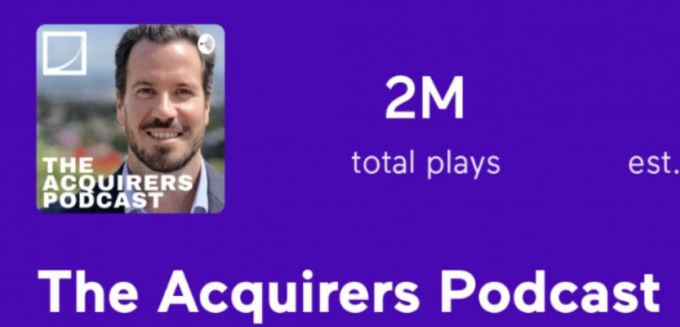During his recent interview on The Acquirers Podcast with Tobias, Vincent Deluard, Director – Global Macro Strategy at StoneX Group Inc discussed The Nuclear Winter Of The 60/40 Portfolio. Here’s an excerpt from the interview:
Tobias: You’ve made a pretty compelling argument, I think, for inflation. What do investors do when they’re confronted with this? You’ve written a note where you break it down by asset, sector, factor, and some stocks, but let’s talk about from an asset allocation perspective, how do you approach a problem like that?
Vincent: Well, the first thing that investors need to realize and seriously think about is what I call the nuclear window of the 60/40 portfolio. The 60/40 portfolio has really been the bread and butter of our industry, and frankly, a lot of people are very wealthy working very little in the asset management industry, because yeah, things just went up. What was it? 4-4-4 for bankers, where you charge, I don’t know 4% on loans, I forgot the other one, and then you’re on the golf course by 4 PM, right?
Tobias: [laughs]
Vincent: That’s how it’s been the asset management industry. “Yeah, okay, give me your money, I’ll buy stocks and bonds. Don’t look at it. [unintelligible [00:15:07] 1% management team, and we’ll all be good.” I think that’s over. It’s over just because the [unintelligible [00:15:14] irremediably broken the bond allocation is– I was looking at VBTIX, which is the world largest bond mutual fund by Vanguard, and I found that 99.9% of these bonds yield less than 4.5%. Now, why 4.5%, because that is the return assumption that Vanguard builds in its target date retirement calculator. So, they tell you, “Come retire with us. You’re going to earn 4.5%,” but then they put you in a funds where 99.9% of bonds are less than that. It’s a joke.
The other part that’s broken in that 60/40 portfolio is a negative correlation between the two assets. For a long time now, yields have been low. But you would still want bonds, because of the diversification. You are not getting much return, but because you reduce the volatility of your stocks, you still improve your risk-adjusted return, your Sharp, and you could even add on leverage because of that.
Well, for the first time in about 20 years now, the trading six-month correlation between stocks and treasuries is positive. Again, this is what you see in an inflation environment. This is the norm– There’s nothing normal about the prior environment, or this one, or whatever. That thing flips based on inflation. In the 70s, in the 80s, all the way up to the mid-90s, stocks and bonds were positively correlated, which is where we are today. Which means that more likely, we’re going to see both stocks and bonds drop at the same time, and people who are in 60/40, or even the leveraged version of it, which I would argue is what disparity is, are going to be facing losses on both sides of the portfolio. So, that’s the first lesson.
You can find out more about Tobias’ podcast here – The Acquirers Podcast. You can also listen to the podcast on your favorite podcast platforms here:
For all the latest news and podcasts, join our free newsletter here.
Don’t forget to check out our FREE Large Cap 1000 – Stock Screener, here at The Acquirer’s Multiple:




